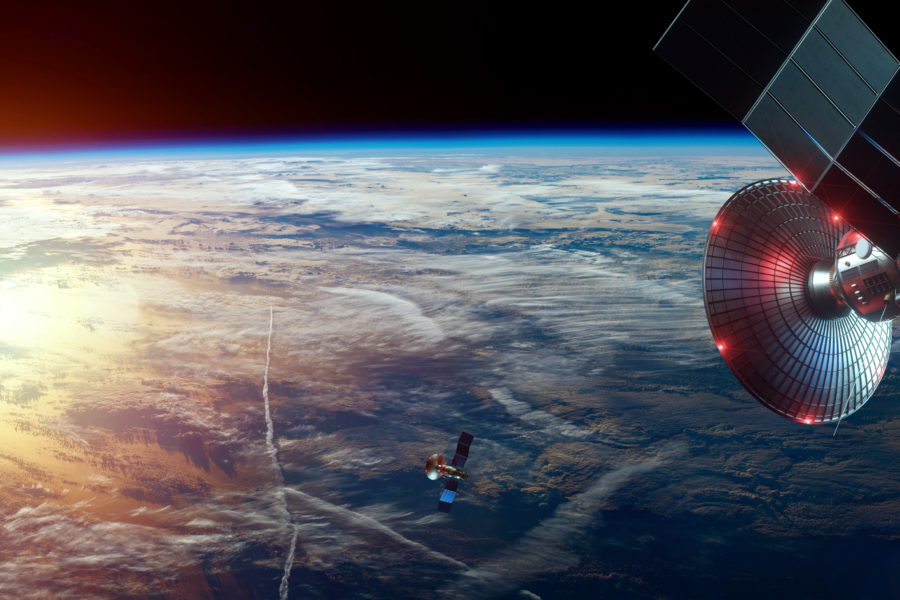Emerging threats in space and the rise of commercial satellite technologies are driving the national security space sector in a new, hybrid direction to answer the evolving needs of the Air Force and Space Force.
“Traditional aerospace and defense companies develop their national security space systems based on customer requirements and an acquisition strategy,” said Jason Kim, CEO of Millennium Space Systems, a Boeing Company. “But commercial companies don’t have to abide by those requirements or acquisition cycles.”
Commercial companies continually invest to upgrade their technology, as long as they see a return on that investment.
This private financing model provides a unique opportunity for industry partners to push Air Force and Space Force capabilities ahead of modern-day demands to meet the needs of the future.
“Commercial companies are not designing systems based on a requirements pool, an RFP, or an agency’s acquisition strategy,” Kim said. “They are seeing things in the market based on modern technologies that are commercially available and providing that as a capability. It’s becoming more of a commercial technology push that creates new market demand, while also addressing a government requirement not yet thought of before.”
Founded in 2001, Millennium Space Systems, a small satellite prototype and constellation company, embodies this hybrid nature of leveraging both commercial technologies and traditional aerospace and defense industry capabilities, including secure and tailored systems.
“We started off taking a lot of the commercial dual-use technologies that were available at the time and space-qualified them with the aim of providing systems on rapid timelines and at affordable costs,” Kim said. With its acquisition by the Boeing Company in 2018, Millennium gained the capability to scale its systems and deliver entire constellations of satellites.
“We’re now seeing our systems delivered in missile warning, missile tracking, ISR, and advanced space science missions,” Kim said. To build at that kind of scale, Millennium is continually tech-refreshing. “We invest constantly in research and development and are regularly tech refreshing our components and mission capabilities,” Kim said.
The lessons taken from the first launch of small satellites can be applied to the next launch. “We’re an engineering company, and we operate our spacecraft, so we’re able to get data on all of our spacecraft components on-orbit and feed that back to the design process. We’re able to apply what we’ve learned into how we manufacture our constellations to improve and tech refresh our components every time we deliver them.”
This capability enables the Air Force and Space Force to align with the go-fast message of Chief of Space Operations Gen. John Raymond and his partner in arms, Air Force Chief of Staff Gen. Charles Q. Brown, Jr.
“The Air Force has stated that we have to ‘Accelerate Change or Lose’ to respond to the advanced threats challenging our capabilities,” Kim said. Millennium addresses that imperative by taking “the most advanced systems in the commercial world” and “space-qualifying those capabilities and making them secure and interoperable,” he said.
Millennium builds 80 percent of its spacecraft components in-house. “A majority of those components are using dual-use commercial technologies,” Kim said. “For example, we take battery technology from the commercial automotive industry and apply that to national security space missions to gain cost savings and faster timelines for our customers.”
This is what Kim means by “space-qualifying” commercial tech.
“Space qualification entails having the right experts that know how to test these components for radiation, susceptibility to upsets, and latch up,” he said. Requirements vary depending on the deployment model.
“The distinct radiation environments of LEO [low-Earth orbit], MEO [mid-Earth orbit] and GEO [geosynchronous orbit] demand different constraints, requirements and limitations on these technologies,” Kim said.
Space-qualifying these technologies requires a rigorous process of radiation testing, vibe testing, and thermal testing in vacuum chambers similar to conditions experienced during a launch and orbit. “Once we test all these components in piece parts, we’re able to take that data and really select the parts that are able to withstand the harsh environments that our systems are going to operate in.”
As part of Boeing, Millennium can access a host of capabilities with expertise in supply chain management, manufacturing, and so much more. “We’re able to take advantage of a lot of resources that [Boeing] provides in mission domain expertise,” Kim said. “[Boeing] has a lot of senior technical fellows that we’re able to deploy to our different flight programs to help us enhance capabilities and overcome challenges. We also have been able to bring in a lot of expertise in model-based systems engineering and digital engineering, which includes the tools that they’ve invested in and the processes that they’ve developed over the years, as well as a lot of the proof points and lessons learned from other programs in other domains.”
Millennium Space Systems remains an agile, flexible player, providing its customers with the best of all worlds: The nimbleness of a startup and the strength and experience of an aerospace giant.
“Millennium can keep ahead of advanced threats, to really sense the threats, track them, and provide information directly to the warfighters,” Kim said. “Our hybrid nature enables us to do two things: Invest to bring forward future capabilities and to rapidly adapt to changing requirements. That’s what our customers need.”

